Cambodia Full Travel Guide 2025: Culture & Essential Tips

Ready to discover a kingdom where ancient temples peek through misty jungles and golden sunsets paint stories across centuries-old stones? Welcome to Cambodia, a land that’s captured my heart and soul over countless visits. From the awe-inspiring Angkor Wat (ranked 12th globally in Tripadvisor’s Travel Choice Awards!) to the pristine beaches of Koh Rong Samloem, this Southeast Asian gem is pure magic. Whether you’re temple-hopping in Siem Reap, exploring bustling markets in Phnom Penh, or diving into delicious street food scenes, Cambodia promises adventures that’ll stay with you forever.
I’ve got all the insider tips you need to make your trip absolutely amazing. Trust me, Cambodia has stolen my heart, and I’m about to show you why!
When’s the Best Time to Visit? Let’s Talk Weather! ☀️🌧️

Listen up, because timing your visit right can make or break your Cambodian adventure! Cambodia rocks a tropical climate with two distinct seasons, and I’ve experienced them both multiple times .The dry season (November to April) is what most travelers consider the best time to visit. The weather is gorgeous, with clear skies and temperatures that make temple-hopping a breeze. This is also the peak tourist season, especially around Angkor Wat temple complex .But here’s my hot take – don’t automatically dismiss the wet season (May to October)! Sure, you’ll get some afternoon showers, but they usually don’t last long, and you’ll get to see Cambodia at its most lush and beautiful. Plus, those lower prices during the rainy season mean more money for street food adventures!
Best Time to Visit: Weather Watch ⛅

Cambodia’s tropical climate means timing is everything! Here’s my personal take after experiencing all seasons:
Peak Season (November-February)
- Perfect weather
- Higher prices
- Lots of tourists at major sites
- Best for temple exploring
Shoulder Season (March-May)
- Hot but manageable
- Lower prices
- Fewer crowds
- Great for beach time
Rainy Season (June-October)
- Brief but heavy showers
- Lush green landscapes
- Best deals on accommodation
- Perfect for photography
Rainy Season: Everything You Need to Know 🌧️
When is the Rainy Season?
The rainy season in Cambodia runs from mid-May to early October, when the southwest monsoon brings heavy rains and increased humidity across the country . During this period, approximately 75% of Cambodia’s annual rainfall occurs .
Rainfall Patterns

Heaviest Rainfall Months: July to September experience the most intense precipitation
Regional Variations:
Coastal and highland areas: Can receive over 5,000mm of annual rainfall
Central lowland areas: Receive about 1,270-1,400mm
Temperature During Rainy Season
- Temperature range: 22°C to 34°C
- High humidity levels throughout the season
Impact on Travel
Advantages
- Lower tourist numbers
- Cost savings up to 30% on accommodations and flights
- Lush, vibrant landscapes perfect for photography
- More authentic experience with fewer crowds
Challenges
- Afternoon showers (typically brief)
- Possible flooding in rural areas
- Muddy roads in some regions
- Potential travel delays
Pro Tip: The sweet spot is November to February when the weather is at its most pleasant. Just keep in mind it’s also the high season, so book ahead!
Money Matters: Navigating the Two-Currency Dance 💵

One of the quirkiest things about Cambodia is how they handle money. Get this – you’ll be dealing with both U.S. dollars and Cambodian riel! After countless transactions, here’s what I’ve learned:
U.S. dollars are widely accepted everywhere (just make sure they’re crisp and undamaged!)
- The local currency (Cambodian riel) is mainly used for small purchases
- The official currency of Cambodia might be riel, but dollars are king in tourist areas
- Keep small change handy – it’s super useful for local markets and tuk tuk drivers
Cost of Living Guide for Travelers in Cambodia
Accommodation Costs 🏨
Budget Options

- Hostel dorm beds: $5-10 per night in Siem Reap
- Budget guesthouses: $10-15 per night for a basic room
- Shared rooms in budget hotels: $5-8 per person
Mid-Range Options

- Hotels with pools: $30-60 per night
- Beachfront bungalows: $16-32 per night
Luxury Options
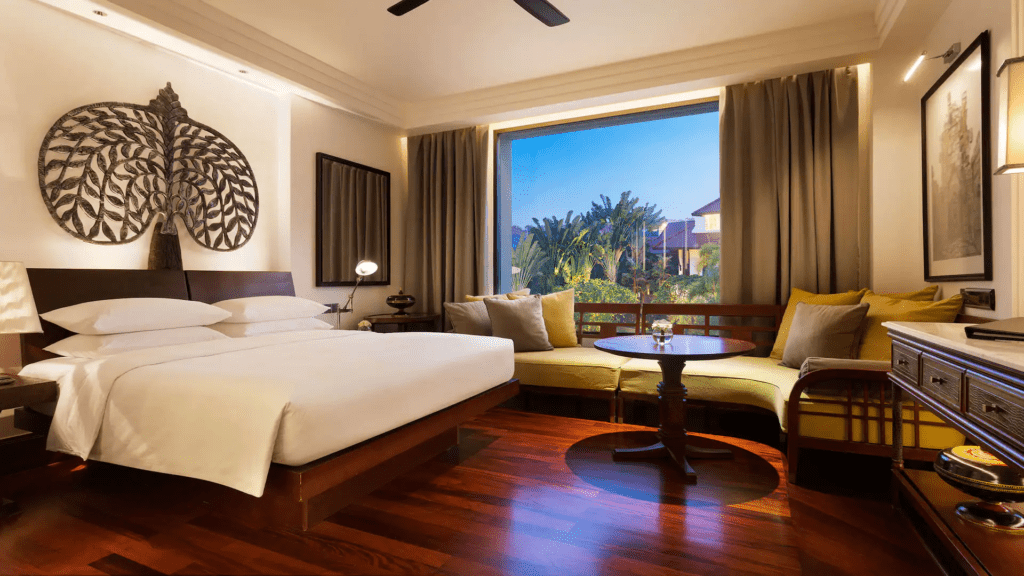
- High-end resorts: Starting from $80-150 per night
- Floating bungalows in Koh Kong: $260 per night
Transportation 🚗
Local Transport

- Tuk-tuk rides: Negotiable, but generally:Short city rides: $2-3Half-day temple tours: $15-20
- Short city rides: $2-3
- Half-day temple tours: $15-20
- Local buses: Most economical option for intercity travel
- Taxis: Higher cost than tuk-tuks but offer more comfort
Food & Drinks 🍜
Street Food & Local Restaurants
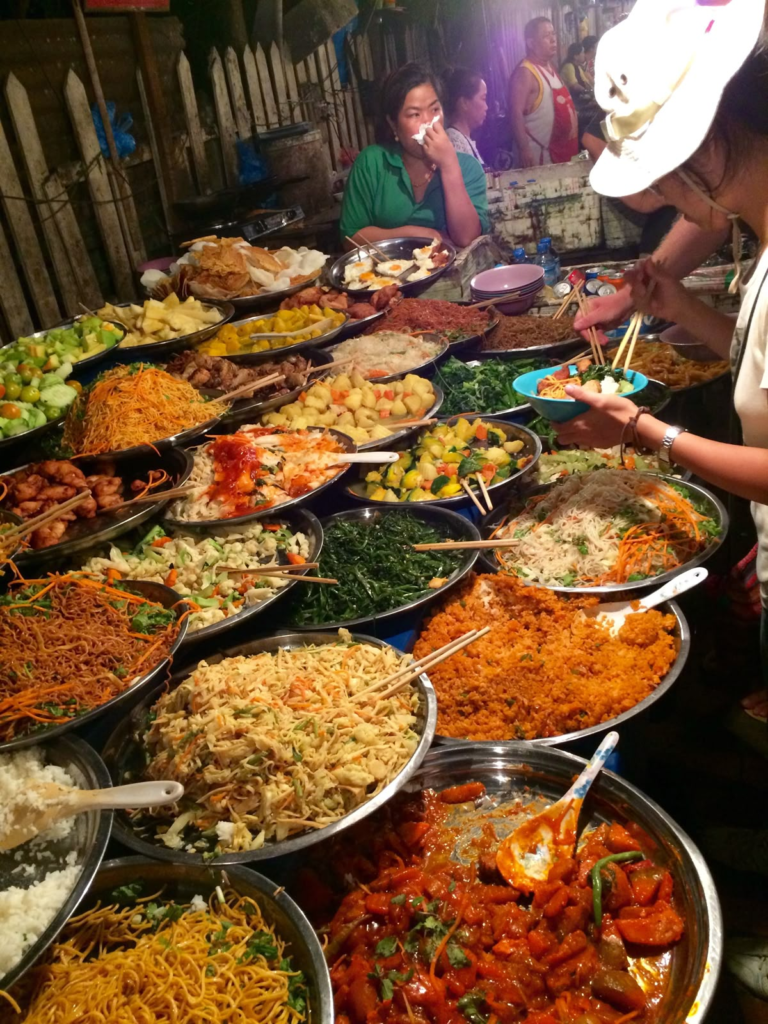
- Street food meals: $1-3
- Local restaurant meals: $2-5
- Traditional dishes like Amok or Lok Lak: $3-5
- Fresh fruit from markets: $0.50-2
Western Restaurants
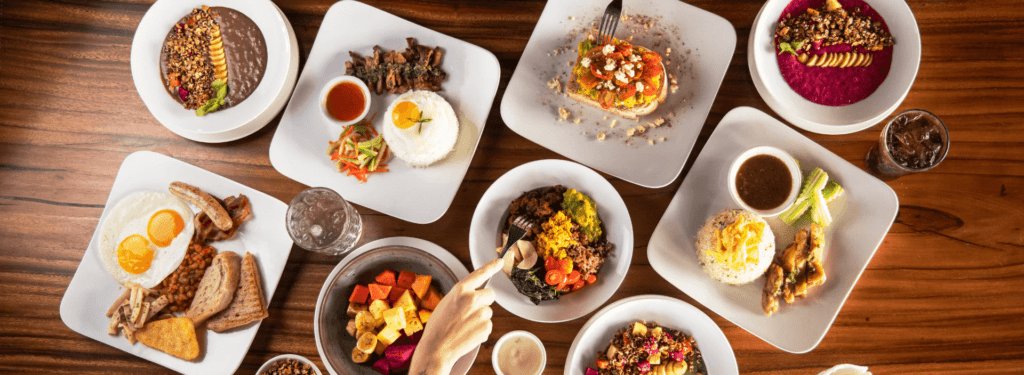
- Western breakfast: $5-6.50
- Main courses: $5-15
- Coffee in cafes: $2-4
Tourist Activities 🏛️
Temple Access
Angkor Wat passes:
- One-day pass: $37
- Three-day pass: $62
- Seven-day pass: $72
Tours & Entertainment
- Full-day guided temple tours: $50-100
- Apsara dance shows with dinner: $15-30
- Cooking classes: $20-50
- Boat tours (Tonle Sap Lake): $20-30
Daily Essentials 🛍️
Communication
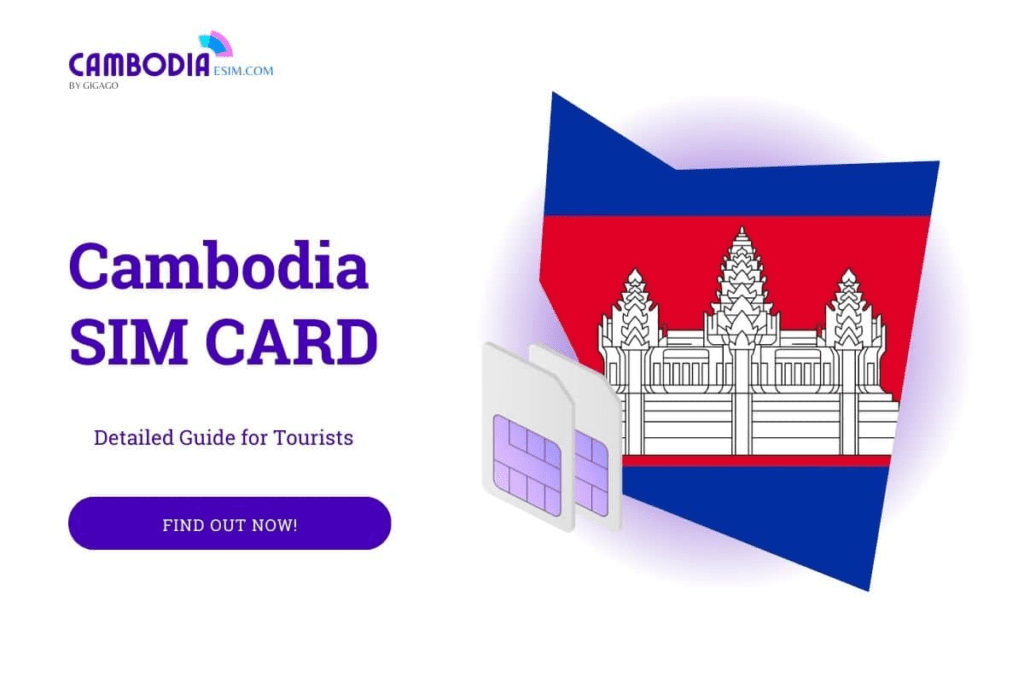
- Local SIM card: Available at airports and city centers
- Data packages: Competitive rates from providers like Metfone, Smart, and Cellcard
Personal Items

- Bottled water: Inexpensive, widely available
- Toiletries: Local brands cheaper than imported ones
- Basic medications: Available at local pharmacies
Budget Breakdown Per Day 📊
Backpacker Budget ($25-35/day)
- Hostel dorm: $5-10
- Street food meals: $5-10
- Local transport: $5-10
- Activities: $5-10
Mid-Range Budget ($50-100/day)
- Mid-range hotel: $30-60
- Restaurant meals: $15-25
- Transport: $10-15
- Activities: $15-25
Luxury Budget ($150+/day)
- Luxury hotel: $80+
- High-end dining: $30-50
- Private transport: $25-40
- Premium activities: $50+
Money-Saving Tips 💡
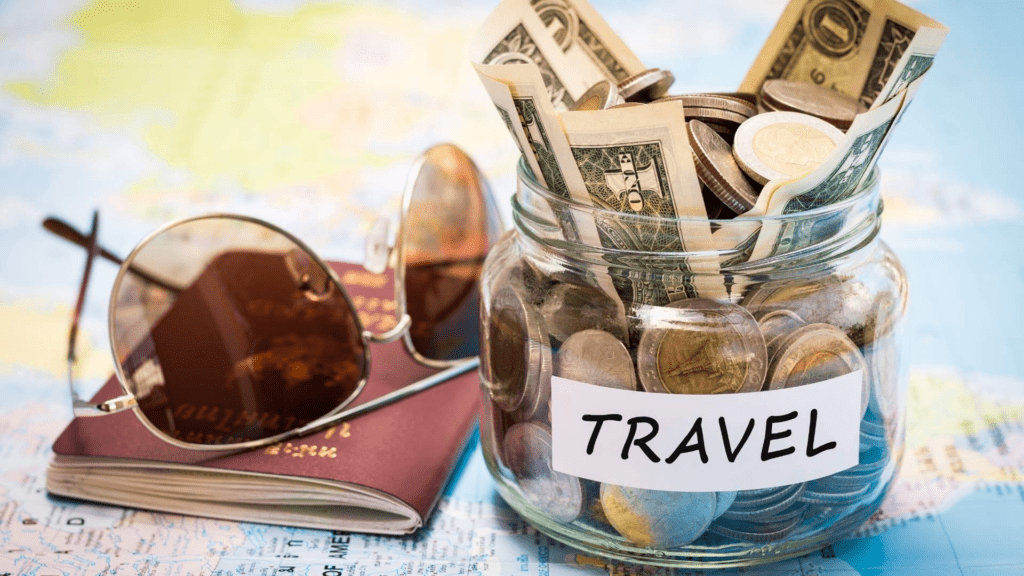
1. Use local currency (Cambodian Riel) for small purchases
2. Negotiate prices, especially for tuk-tuks and market items
3. Eat at local markets and street food stalls
4. Travel during shoulder season for better accommodation rates
5. Book longer stays for better hotel rates
6. Use public transportation for intercity travel
7. Purchase multi-day passes for temples if planning extended visits
Remember that prices can vary significantly between tourist areas and local neighborhoods, with tourist-heavy locations like Siem Reap and Phnom Penh generally being more expensive than rural areas. However, compared to Western countries or even other Southeast Asian destinations like Thailand or Singapore, Cambodia remains a relatively affordable destination for travelers.
Getting Around: Transportation Tips from a Pro 🛵

After countless adventures (and misadventures) getting around Cambodia, I’ve tried every form of local transportation possible! Here’s the scoop:
Tuk-Tuks: Your New Best Friend
These are my favorite ways to explore major cities like Siem Reap. Pro tip: Always negotiate the price before hopping in, and find yourself a reliable tuk-tuk driver for your entire stay. My guy Sokha in Siem Reap has become like family!
Public Transportation
Between major cities, buses are your best bet. Companies like Giant Ibis are super reliable, and they’ve saved my bacon more times than I can count. For those on a tight schedule, domestic flights between Phnom Penh airport and Siem Reap are available.
Safety First: Staying Street Smart 🚨
Let’s keep it real – while Cambodia is generally a safe place, there are some things you need to watch out for. After years of exploring every corner of this country, here’s what I’ve learned about the most common crimes :
- Bag snatching can happen, especially in busy areas
- Keep your important documents locked up safe
- Violent crime is rare but stick to well-lit areas at night
- Get travel insurance (seriously, don’t skip this!)
Cultural Do’s and Don’ts: Respect Goes a Long Way 🙏
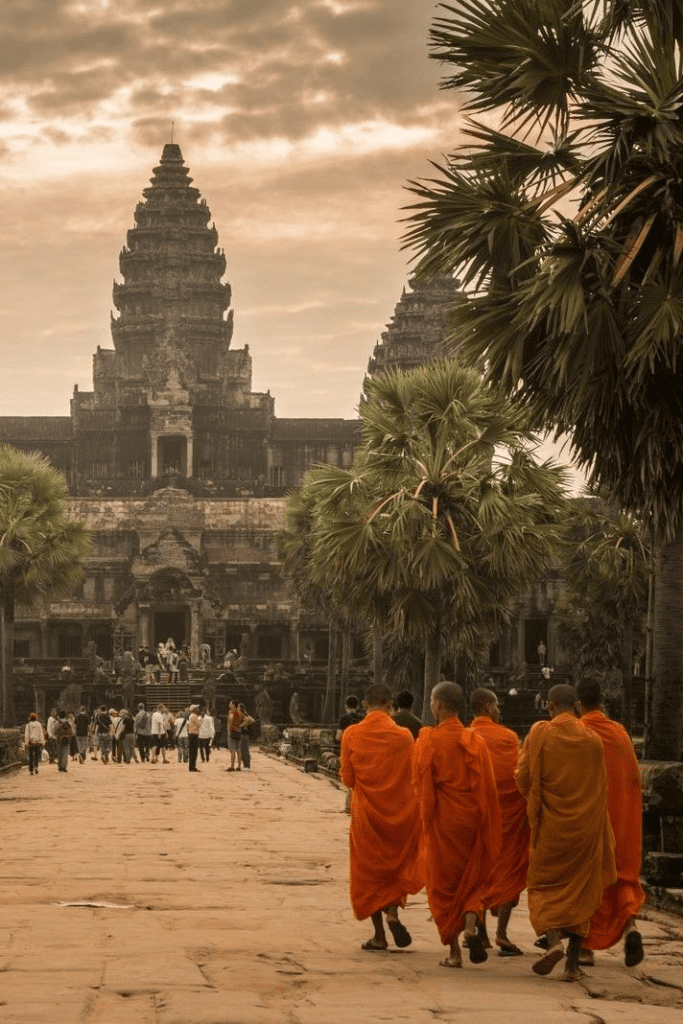
Cambodian culture is beautiful but comes with its own set of rules. Here’s what I’ve learned about local customs :
- Public displays of affection are a no-no
- Dress modestly at religious sites (cover those shoulders and knees!)
- Learn a little Khmer – the official language of Cambodia
- Remove shoes before entering temples or homes
Food Scene: A Feast for Your Taste Buds 🍜

Oh boy, let me tell you about Cambodian food! After countless meals from street vendors to local markets, I’m officially obsessed. Here are some must-tries:
Bai sach chrouk (grilled pork and rice) for breakfast
- Nom banh chok (Khmer noodles) from the local markets
- Street food galore (just stick to busy stalls!)
- Delicious food everywhere you look
Top 10 Must-Try Cambodian Dishes
1. Fish Amok (Amok Trey)
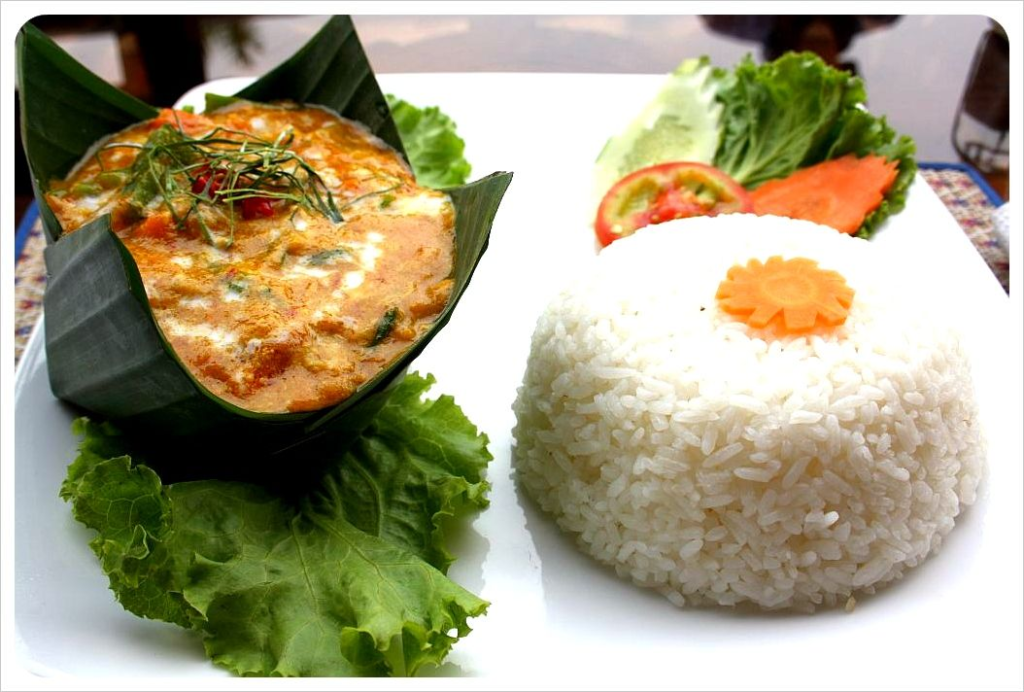
- Cambodia’s celebrated national dish
- A fragrant coconut fish curry steamed in banana leaves
- Features a unique mousse-like texture
- Made with traditional kroeung spice paste
- Combines lemongrass, kaffir lime, and galangal
2. Lok Lak

- Traditional Khmer stir-fried beef
- Served with a tangy lime and Kampot pepper sauce
- Accompanied by fresh lettuce, cucumbers, and tomatoes
- French colonial influence evident in preparation
- Popular among both locals and tourists
3. Nom Banh Chok (Khmer Noodles)
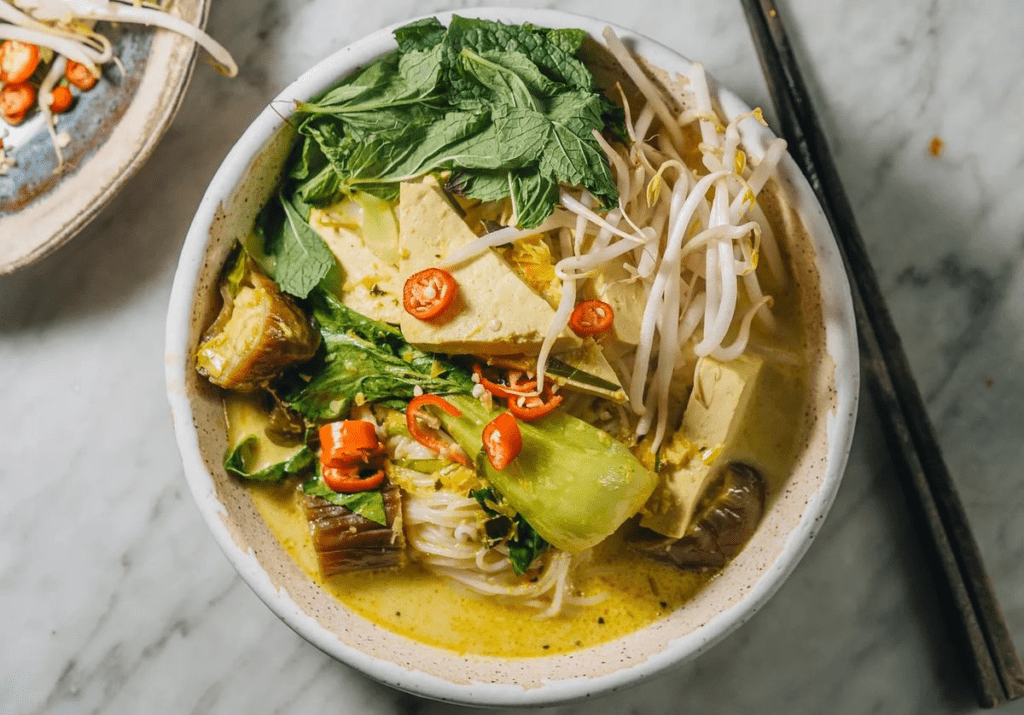
- Known as the “spiritual food of Cambodia”
- Hand-made, lightly fermented rice noodles
- Topped with a green fish-based curry sauce
- Fresh vegetables and herbs
- Popular breakfast dish found at local markets
4. Bai Sach Chrouk
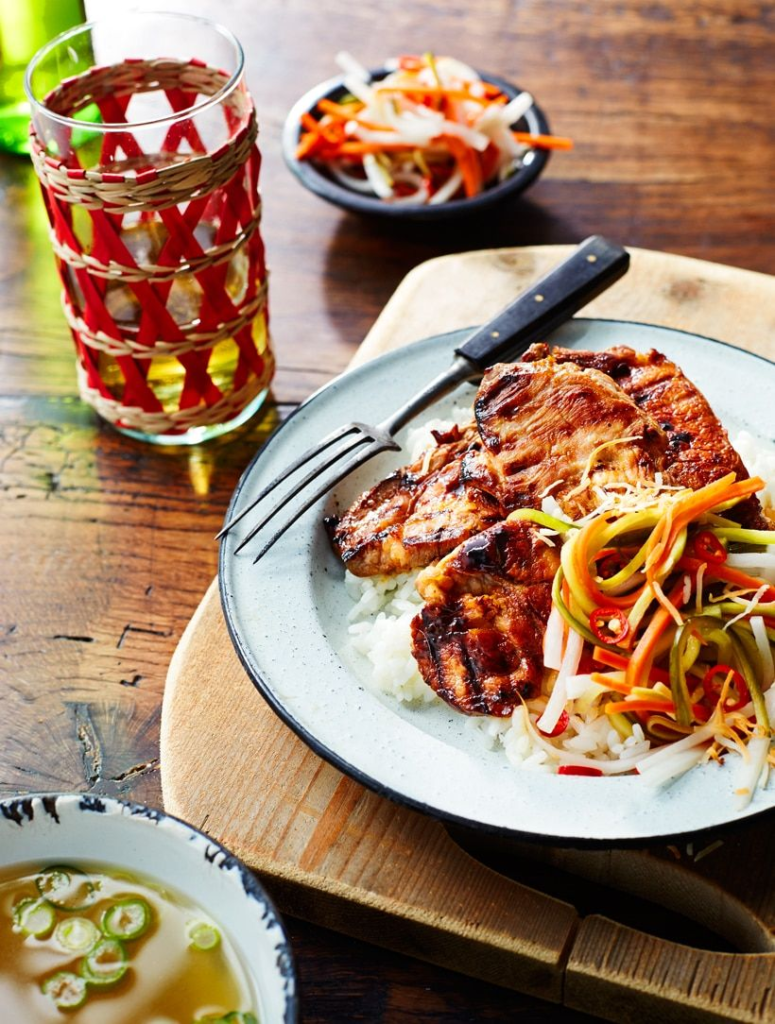
- Beloved breakfast dish
- Thinly sliced pork marinated in coconut milk and garlic
- Grilled over charcoal
- Served with pickled vegetables and rice
- Found at morning markets across Cambodia
5. Kampot Pepper Crabs

- Specialty from the coastal town of Kep
- Fresh crabs cooked with famous Kampot green pepper
- Known for unique spicy flavor profile
- Must-try seafood dish
- Represents Cambodia’s coastal cuisine
6. Khmer Red Curry

- Milder than Thai versions
- Rich coconut milk base
- Made with kroeung paste
- Often prepared with chicken, beef, or fish
- Traditional celebration dish
7. Kuy Teav

- Essential Cambodian noodle soup
- Clear broth made from pork or beef bones
- Rice vermicelli noodles
- Garnished with bean sprouts and herbs
- Popular breakfast option
8. Samlar Machu

- Traditional sour soup
- Contains meat, fish, or seafood
- Features tamarind and pineapple
- Includes prahok (fermented fish paste)
- Represents traditional Khmer flavors
9. Lort Cha
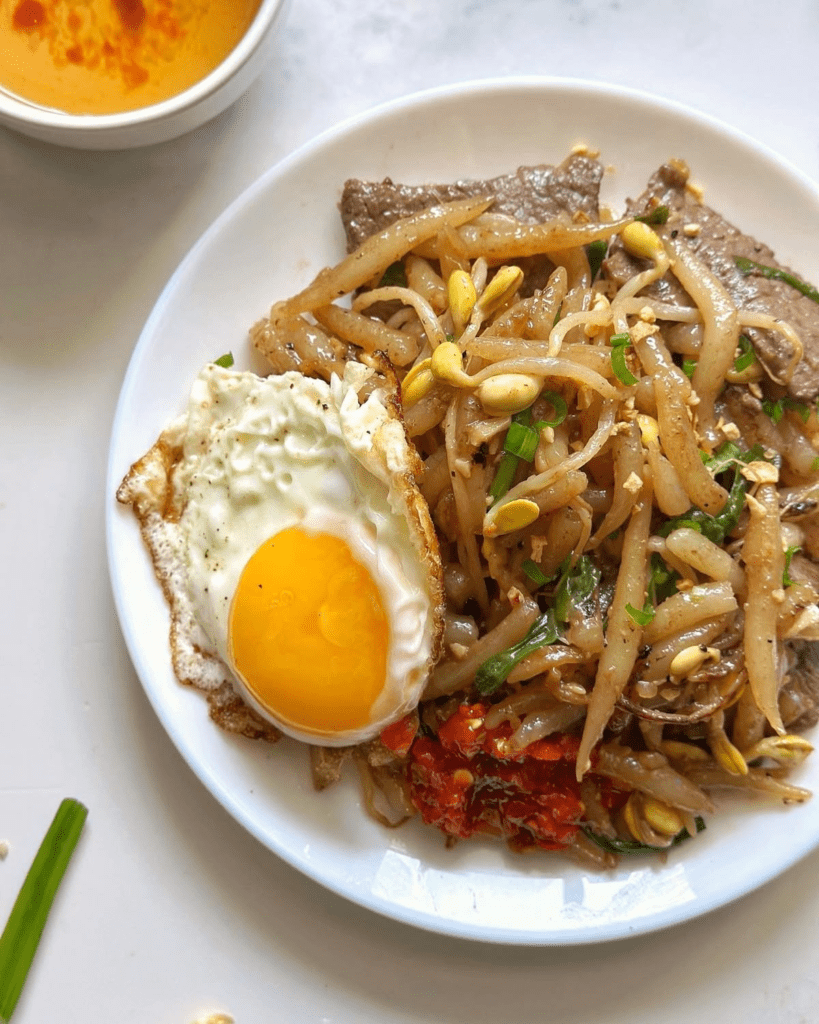
- Popular street food dish
- Stir-fried short rice pin noodles
- Mixed with bean sprouts and chives
- Served with spicy sauce
- Found at street vendors nationwide
10. Prahok Ktis
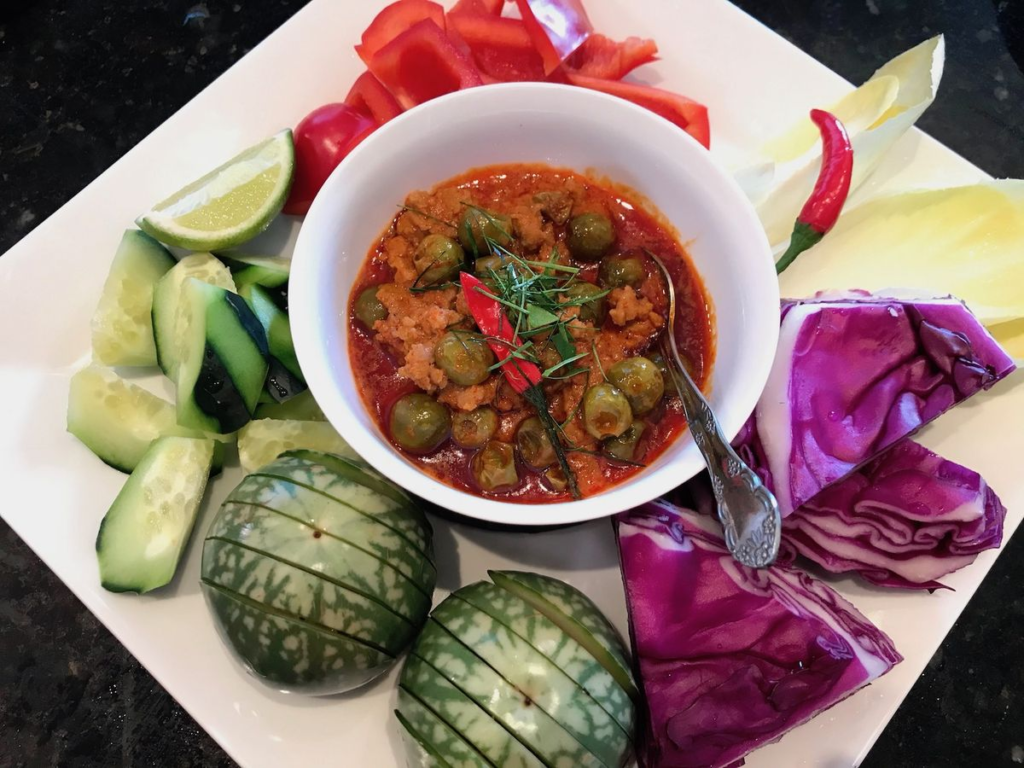
- Traditional dipping sauce
- Made with fermented fish paste
- Mixed with minced pork
- Served with fresh vegetables
- Essential part of Khmer cuisine
The 10 Must-Visit Destinations in Cambodia
1. Angkor Wat Temple Complex – Siem Reap
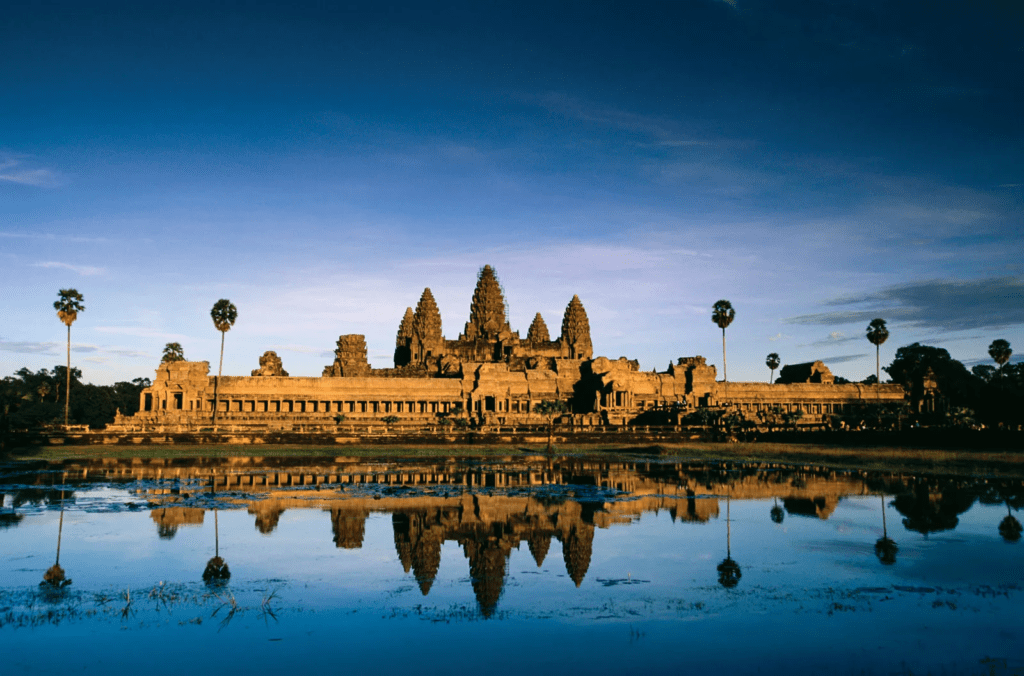
UNESCO World Heritage Site and the world’s largest religious monument
Attracted 2.2 million international tourists in recent years
Ranked 12th globally in Tripadvisor’s Travel Choice Awards
Best visited during sunrise or sunset for spectacular photo opportunities
Pro tip: Purchase a multi-day pass to explore the complex thoroughly
2. Phnom Penh – The Capital City

Ranked 9th among top trending tourist destinations worldwide
Key attractions include:
- The Royal Palace
- National Museum
- Tuol Sleng Genocide Museum
- Vibrant café and restaurant scene
- Important historical and cultural center
3. Banteay Chhmar

One of the most important yet least understood temples of the Khmer Empire
Features intricate bas-reliefs showing daily life and military battles
Less commercialized than Angkor Wat
Perfect for those seeking authentic experiences
Located about 3-4 hours from Siem Reap
4. Koh Rong Samloem

Pristine beaches and crystal-clear waters
Perfect for:
- Scuba diving
- Relaxation
- Beach activities
- Less crowded than Thai islands
- Offers a more tranquil island experience
5. Preah Vihear
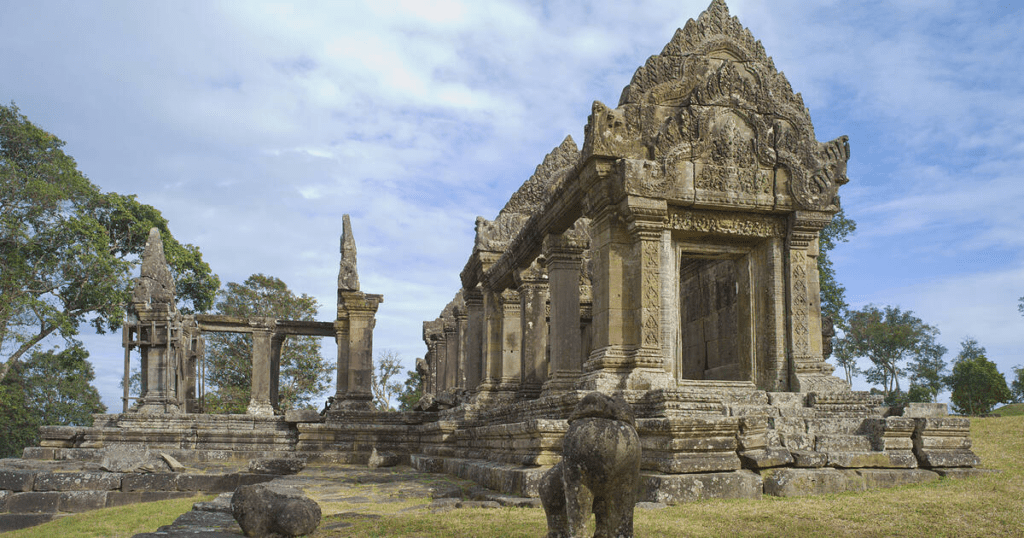
- UNESCO World Heritage Site
- Dramatically perched atop the Dângrêk Mountains
- Stunning architectural design
- Panoramic views of the surrounding landscape
- Historical significance from the Khmer Empire period
6. Battambang

Famous for:
- Colonial architecture
- The unique Bamboo Train
- Nearby temples (Phnom Sampeau and Wat Ek Phnom)
- Cambodia’s artistic heart
- Rich cultural heritage and rural scenery
7. Kep

Emerging coastal retreat
Known for:
- Tranquil beaches
- Fresh seafood markets
- Colonial architecture
- Gateway to Rabbit Island
- Perfect for those seeking a peaceful getaway
8. Sambor Prei Kuk
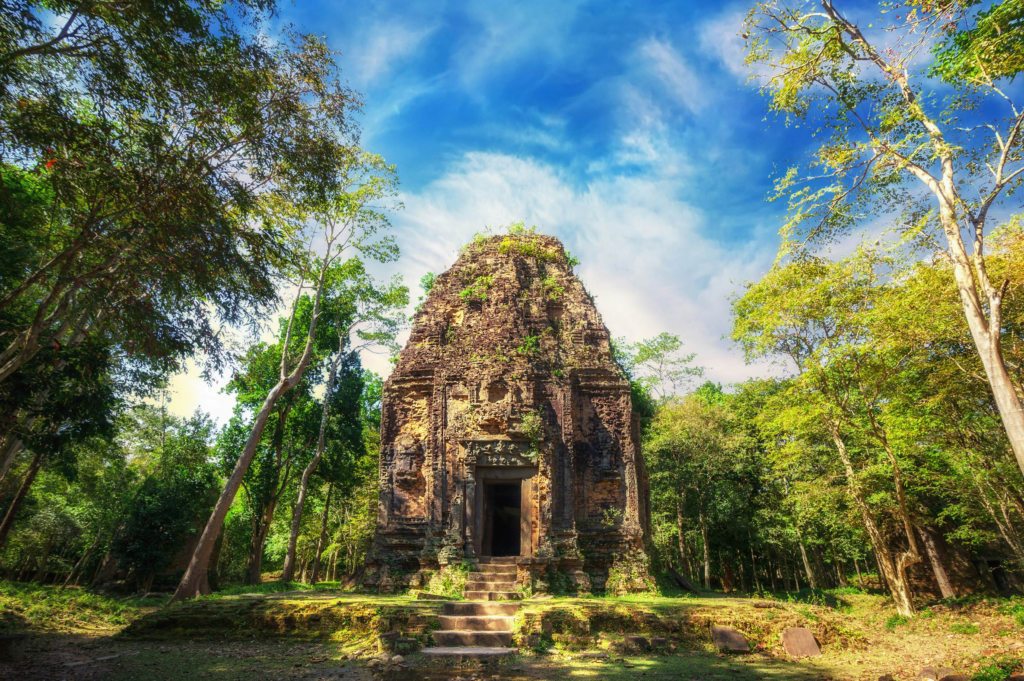
- Pre-Angkorian archaeological site
- Dates back to 6th-7th centuries
- Features well-preserved brick temples
- Unique octagonal towers
- Provides insights into early Khmer civilization
9. Tonlé Sap Lake

- Southeast Asia’s largest freshwater lake
- Home to floating villages
- Rich biodiversity
- Cultural significance
- Popular for boat tours and village visits
10. Kampot
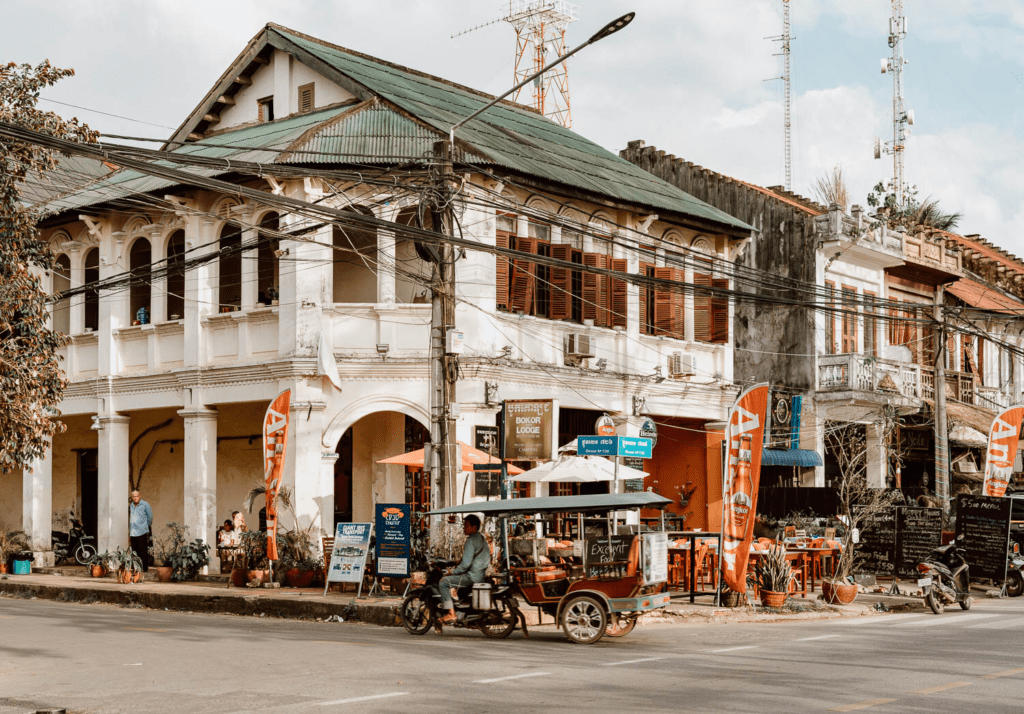
Known for:
- Famous pepper plantations
- Colonial architecture
- Gateway to Bokor National Park
- River activities (kayaking)
- Hidden waterfalls
While everyone knows about Angkor Wat temple complex (and trust me, it’s absolutely worth the hype!), let me share some one of my favorite spots that are totally off the beaten track:
Mondulkiri: Where the Wild Things Are
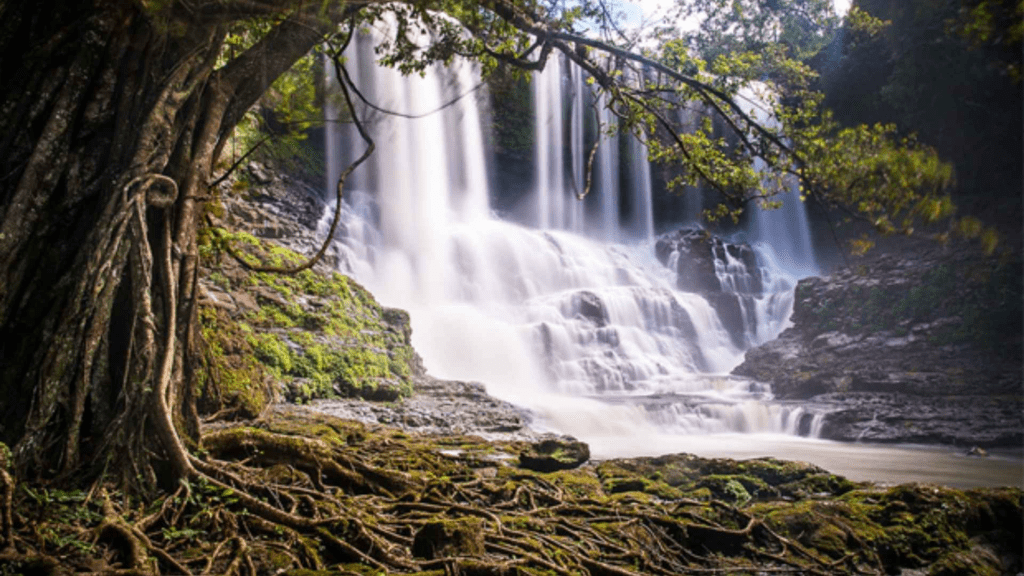
After spending a week in this eastern paradise, I can tell you it’s one of the best places for nature lovers. The Elephant Valley Project here is doing amazing work with elephant conservation, and the jungle treks are mind-blowing . Pro tip: Stay at least three days to really soak in the wilderness vibes!
Visa and Documentation: The Boring (but Important) Stuff 📝

Let me make this super easy for you! As of 2025, here’s what you need to know:
- Tourist e-visas now cost $36 (including processing fee) – such good news for budget travelers!
- Make sure you have at least two blank pages in your passport
- Your passport needs to be valid for six months beyond your stay
- Complete the new E-Arrival Card online at least 7 days before arrival
Cultural Do’s and Don’ts: Keep it Respectful! 🙏
Cambodian culture is incredibly rich and beautiful, but there are some important things to keep in mind:
Dress Code
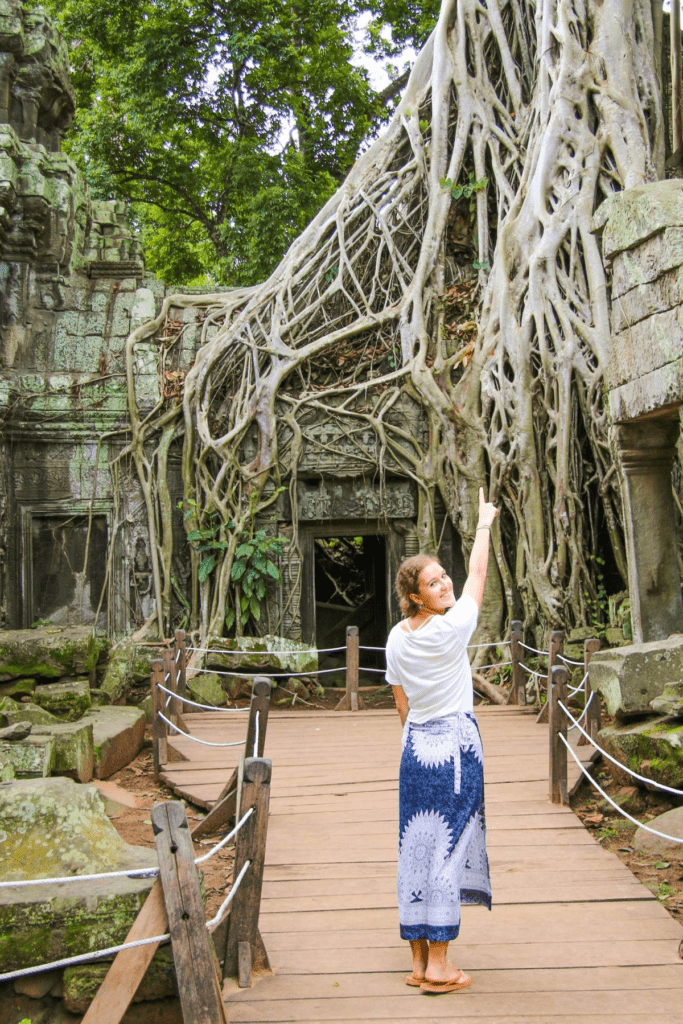
- Long pants and modest tops at religious sites
- No tank tops at temples (I learned this the hard way!)
- Cover shoulders when visiting the Royal Palace
Behavior
- Remove shoes before entering homes or temples
- Avoid public displays of affection
- Show extra respect to elderly people
- Learn a little Khmer – the official language of Cambodia. Trust me, locals appreciate the effort!
Health and Safety: Stay Smart, Stay Safe 🏥

After years of traveling through Cambodia, here are my tried-and-tested tips:
Water and Food Safety
Stick to bottled water (tap water is a no-go)
Street food is amazing, but choose busy stalls
Bring insect repellent (those mosquitos mean business!)
General Safety
Keep important documents safe
Watch out for bag snatchers in tourist areas
Get travel insurance (seriously, don’t skip this!)
Keep a local sim card handy for emergencies
Getting Around: Transportation Guide 🚗
Between Cities

- Buses are your best option for longer distances
- Domestic flights available between major cities
- Private taxis for more comfort
Local Transportation

- Tuk-tuks are perfect for city exploration
- Grab (Southeast Asia’s Uber) is available in major cities
- Rent a bicycle for temple hopping
Recent Updates for 2025 📅
Some exciting developments you should know about:
1. Tourism is booming with 7.2-7.5 million international visitors expected this year
2. The new Techo Takhmao International Airport is opening, making travel even easier
3. All COVID-19 restrictions have been removed
4. The tourism industry generated $3.63 billion in 2024
A Few Cambodian words for your travel
Basic Greetings & Politeness 🙏Formal Greetings

Hello: “Chom Reap Sour” (chom-reap-sore)
Goodbye: “Jum Reap Lea”
Thank You: “Orkun”
Please: “Soum”
Casual Greetings
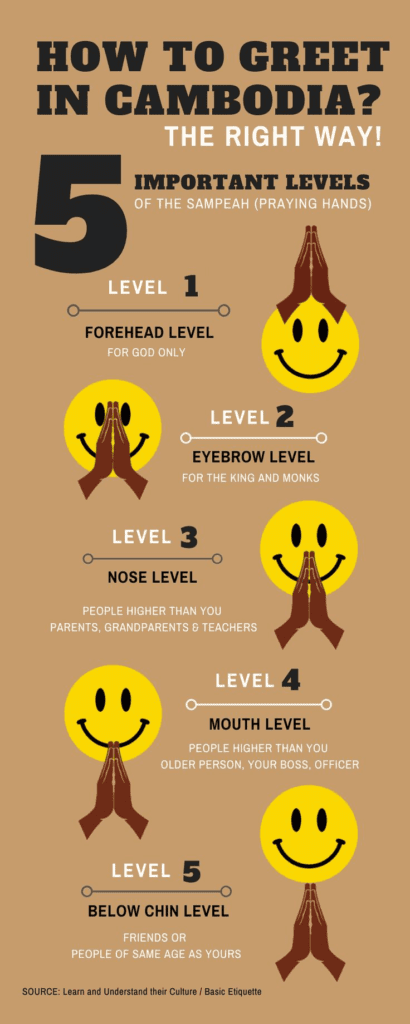
Hi/Hello: “Suo S’dei” (suh-SDEY)
Bye: “Lea Hay”
Pro Tip: When greeting someone, use the Sampeah gesture (hands pressed together in prayer position) – it’s super important in Cambodian culture!
Getting Around 🚗
Tuk-tuk Directions
Turn left: “Baht schweng”
Turn right: “Baht saddam”
Go straight: “Tov trong”
Stop here: “Som chop tini”
How much?: “Bo man”
Numbers (Essential for Shopping!) 🛍️
Basic Numbers

1: “Muoy”
2: “Pii”
3: “Bei”
4: “Buon”
5: “Pram”
10: “Dop”
Restaurant & Food Phrases 🍜
Essential Food Phrases
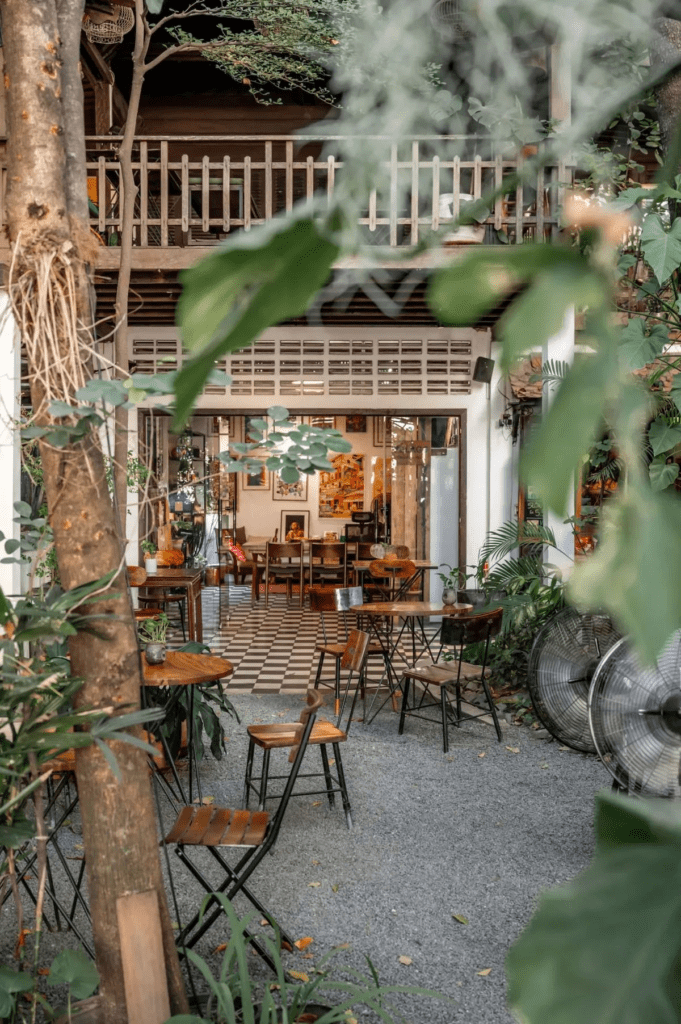
Can I have the menu?: “tae khnhom ach mean meunouy ban te?”
The food is delicious: “mhoub chhnganh nasa!”
Water: “Tuk”
Bill please: “Som kit luy”
I can’t eat spicy: “khnhom min ach nhoam kruengtesa ban te”
Shopping & Bargaining 🛒
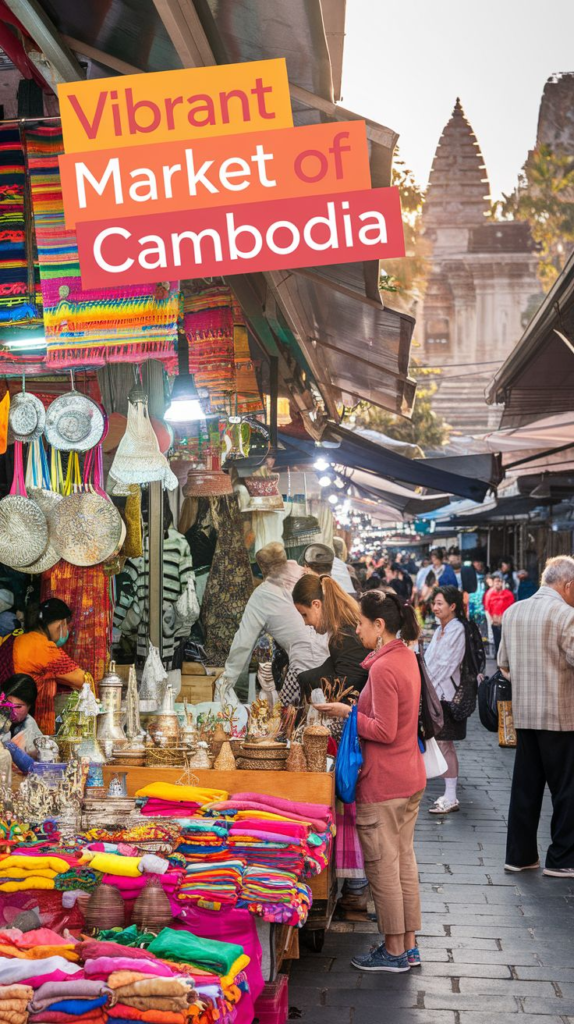
Too expensive: “T’lay nah”
Can you lower the price?: “Som chos t’lai”
I don’t want it: “Ot trov kar te”
Emergency Phrases ⚕️
Help!: “Chuoy phong!”
I need a doctor: “Khnhom trov kar pet”
Where is the bathroom?: “Bongkon nov aena?”
Cultural Tips 📝
Always show respect to elders by using formal greetings
The Sampeah greeting gesture height varies based on the person’s status:
- Chest level for friends
- Mouth/nose level for elders
- Higher for monks or royalty
- Avoid touching people’s heads – it’s considered sacred in Cambodian culture
- Public displays of affection are frowned upon
8. Pronunciation Tips 🗣️
Khmer is a tonal language, but don’t stress too much about getting the tones perfectSpeak slowly and clearlyMost Cambodians appreciate any effort to speak their language, even if it’s not perfect
Pronunciation Tips 🗣️
Khmer is a tonal language, but don’t stress too much about getting the tones perfect
Speak slowly and clearly
Most Cambodians appreciate any effort to speak their language, even if it’s not perfect
Remember, learning just a few basic phrases can make a huge difference in your travel experience. Cambodians are generally very appreciative when tourists make an effort to speak Khmer, and it can lead to more meaningful interactions and better cultural understanding.
A quick sum up of recent Cambodian history
French Colonial Period to Independence (1863-1953)

Cambodia was under French colonial protection from 1863, with the French maintaining control over the country’s economy, trade, foreign policy, and military. Unlike in Vietnam, the French colonial administration in Cambodia was relatively less harsh, allowing the monarchy to continue as a symbolic institution . The path to independence was significantly influenced by King Norodom Sihanouk, who successfully negotiated Cambodia’s independence from France on November 9, 1953 .
The Sihanouk Era (1953-1970)
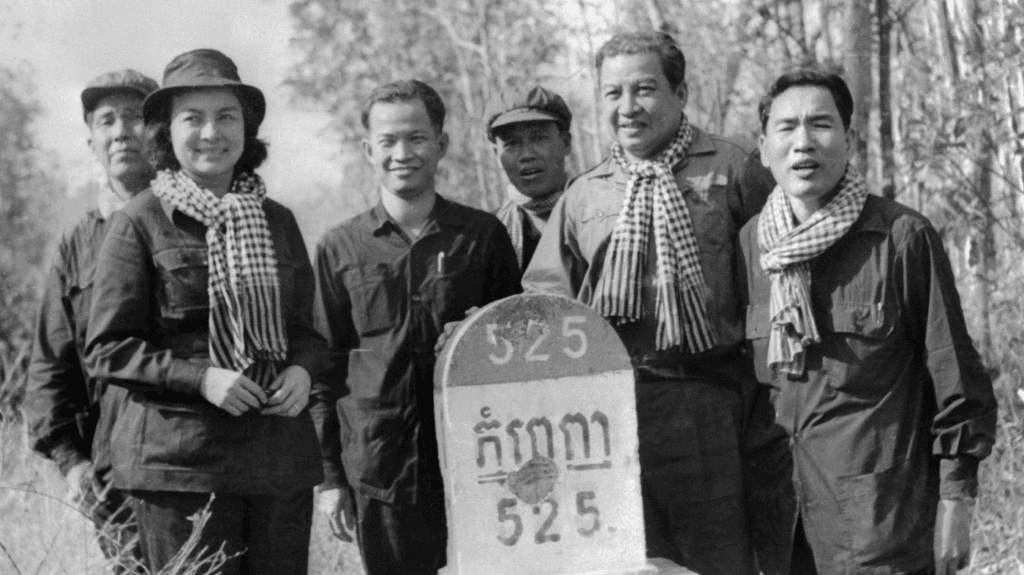
After independence, Sihanouk abdicated the throne in 1955 to pursue a more direct role in politics. He established the Sangkum Reastr Niyum (People’s Socialist Community), which became Cambodia’s sole legal party . During this period, Sihanouk attempted to maintain neutrality in international affairs, particularly during the escalating Vietnam War. However, by the late 1960s, his authoritarian style and economic policies had created significant opposition .
The Khmer Republic and Civil War (1970-1975)
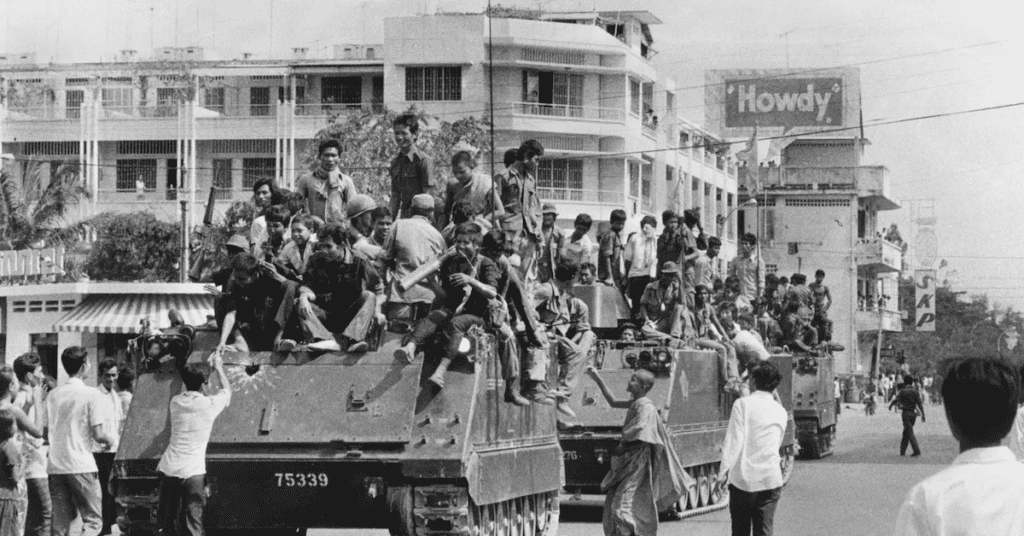
In 1970, while Sihanouk was abroad, General Lon Nol led a coup that established the Khmer Republic. This period was marked by increasing instability and civil conflict, setting the stage for the rise of the Khmer Rouge .
The Khmer Rouge Regime (1975-1979)
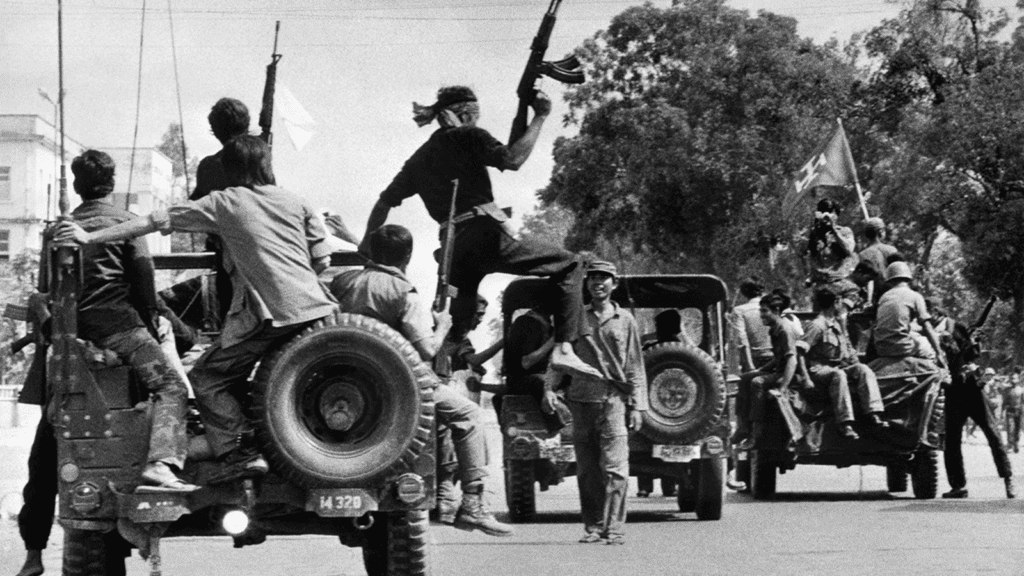
The Khmer Rouge period represents one of the darkest chapters in Cambodian history. Under Pol Pot’s leadership, the regime implemented radical policies aimed at creating an agrarian utopia. Their actions resulted in:
- The death of approximately 1.5 to 3 million people (nearly a quarter of Cambodia’s population)
- Forced evacuation of urban areas
- Abolition of money, private property, and religion
- Mass executions in the infamous “killing fields”
- Targeting of intellectuals, professionals, and ethnic minorities
- The regime’s brutal policies led to widespread starvation, disease, and the destruction of Cambodia’s social and cultural fabric .
Vietnamese Occupation (1979-1989)
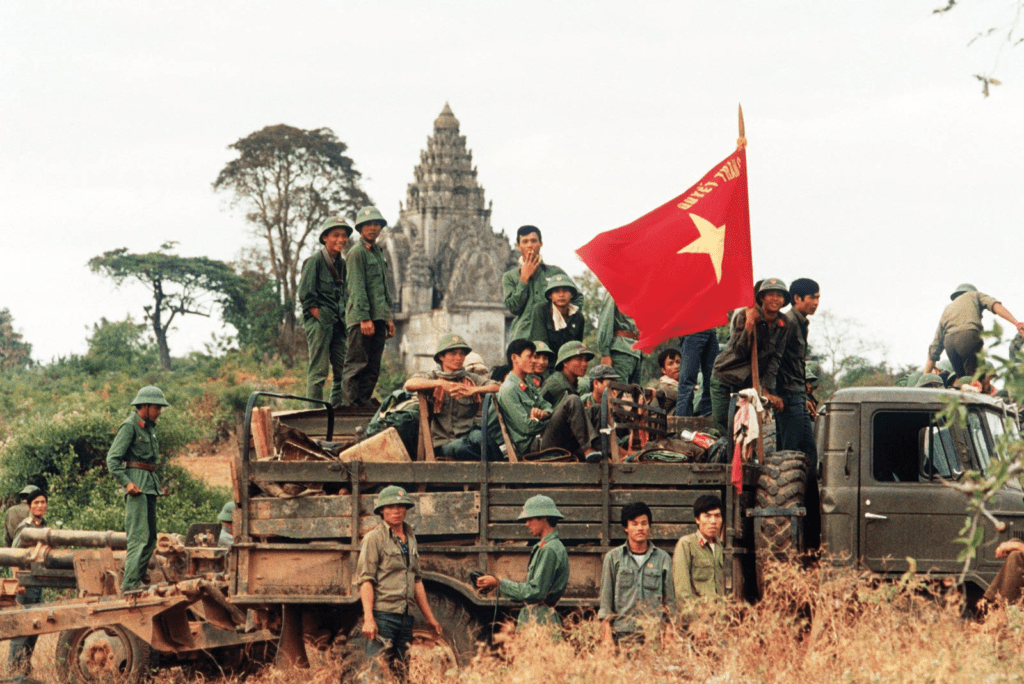
In December 1978, Vietnam invaded Cambodia in response to border conflicts and Khmer Rouge aggression. After capturing Phnom Penh in January 1979, Vietnam established the People’s Republic of Kampuchea (PRK). This period was characterized by:
- Ongoing guerrilla warfare by the Khmer Rouge and other resistance groups
- International tensions, particularly with China supporting the Khmer Rouge
- Soviet support for Vietnam’s occupation
Transition to Democracy (1991-2000)

The 1991 Paris Peace Accords marked a crucial turning point, leading to:
- The establishment of UNTAC (United Nations Transitional Authority in Cambodia)
- The first democratic elections in 1993 with 90% voter turnout
- A power-sharing arrangement between competing political factions
- However, this arrangement collapsed in 1997 when Hun Sen consolidated power through a coup .
Modern Cambodia (2000-Present)

Cambodia has experienced significant development since 2000:
Economic Growth
- Average growth rate of 7.6% per year from 2000-2019
- Achieved lower middle-income status in 2015
- Brief economic contraction during COVID-19 in 2020
- Current recovery with projected 5.8% growth for 2024
Current Challenges and Developments
- Focus on inclusive, sustainable, and resilient growth
- Need for improved education and institutional quality
- Infrastructure development requirements
- Emphasis on digitalization and technology adoption
Recent Achievements
Improved health outcomes and early childhood development
Enhanced social assistance programs
Growing tourism industry
Increased foreign direct investment
The country aims to reach upper middle-income status by 2030 and high-income status by 2050, though significant challenges remain.
Current priorities include:
- Strengthening education and institutional quality
- Developing infrastructure
- Diversifying the economy
- Improving the business environment
- Meeting environmental and labor standards
Cambodia’s recent history reflects a remarkable journey from the devastation of the Khmer Rouge period to its current status as one of Southeast Asia’s emerging economies. While the country has made significant progress in terms of economic development and stability, it continues to address the challenges of sustainable growth, social equality, and democratic governance. The legacy of its troubled past remains influential in shaping its present development trajectory and future aspirations.
Final Tips from a Regular Cambodia Explorer 🌟
After countless trips to this amazing country, here are my top pieces of advice:
1. Embrace the local culture and customs
2. Try all the street food you can
3. Learn basic Khmer phrases
4. Stay flexible with your travel plans
5. Connect with local communities through homestays and cultural exchanges
Remember, Cambodia isn’t just about checking items off your travel bucket list – it’s about immersing yourself in the culture, connecting with the incredibly warm Cambodian people, and creating memories that’ll last a lifetime.So there you have it, friends! Everything you need to know before your Cambodian adventure. Trust me, this country will steal your heart just like it stole mine. Got questions? Drop them in the comments below!Safe travels, Eric 🌏✈️
WHO AM I ?
Hello! I’m Eric, a French Australian citizen based between Australia, Asia and Bali and I love to travel and experience the world. I generally like outdoor activities, wellness, great food and venues , party and real local adventures ! I am a Yoga practitioner and fitness lover
I created this blog because I love to travel and I want to share my experiences with others. I’ve been traveling since I was a child, and I’ve been to over 50 countries. I’ve seen some amazing things and met some amazing people, and I want to help others experience the same things.
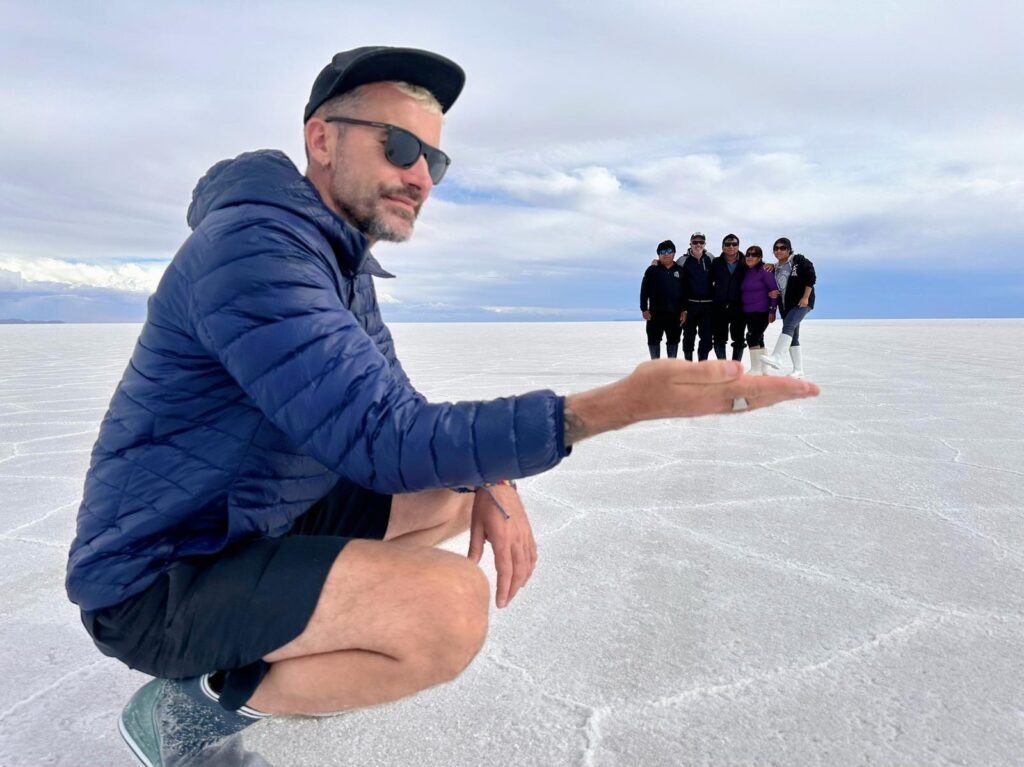
I believe that travel is one of the best ways to learn about the world and about yourself. When you travel, you’re forced to step outside of your comfort zone and experience new things. You learn about different cultures, different religions, and different ways of life. You also learn about yourself, your strengths, and your weaknesses.
Travel can also be a great way to make new friends. When you’re traveling, you’re surrounded by people from all over the world, and you’re all in the same boat. You’re all there to explore and experience new things, and that can create a bond between people.
Let’s connect together!
I hope that my travel blog will inspire others to travel and to see the world. I also hope that it will help people to learn about different cultures and to become more open-minded.
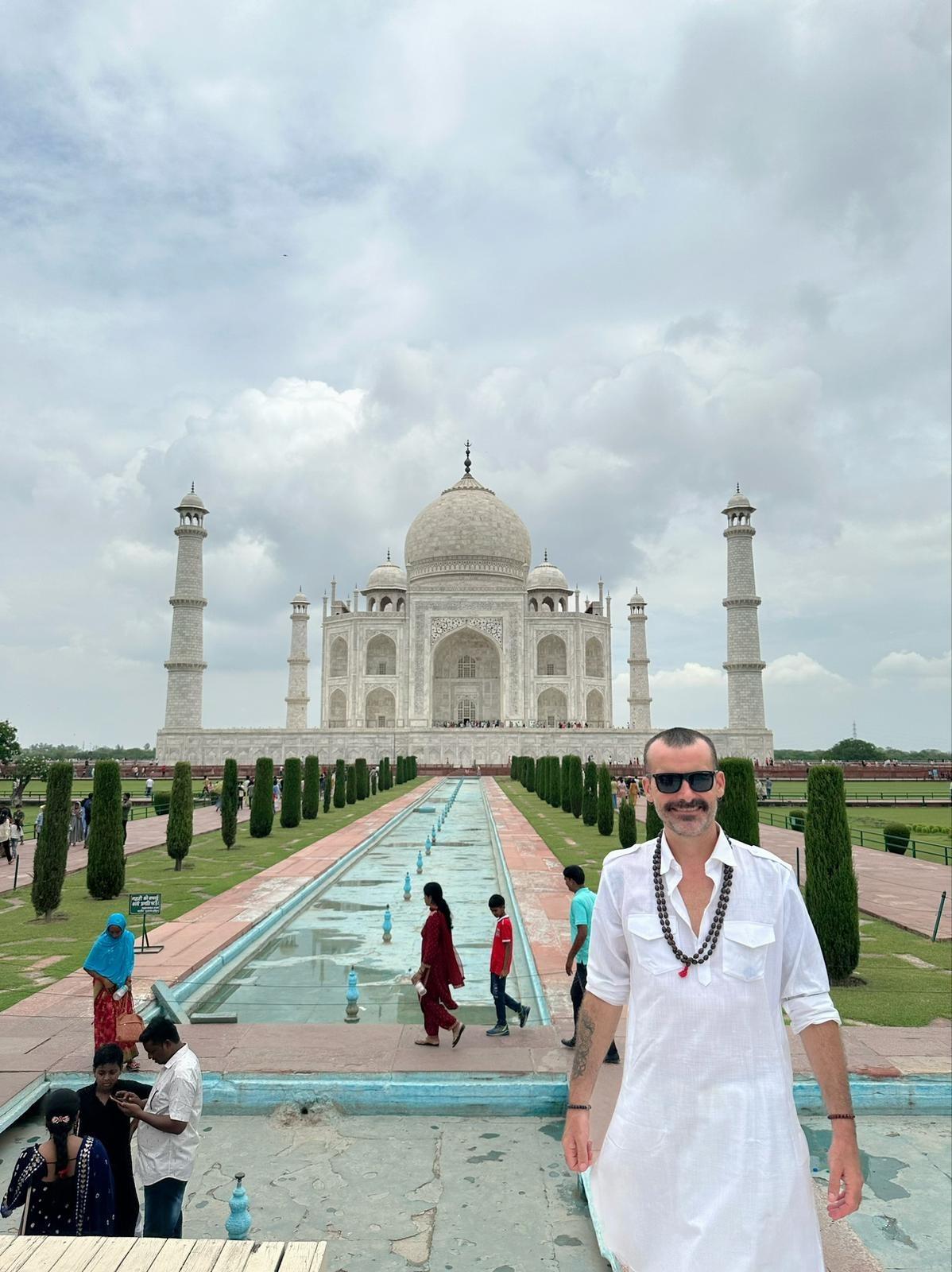


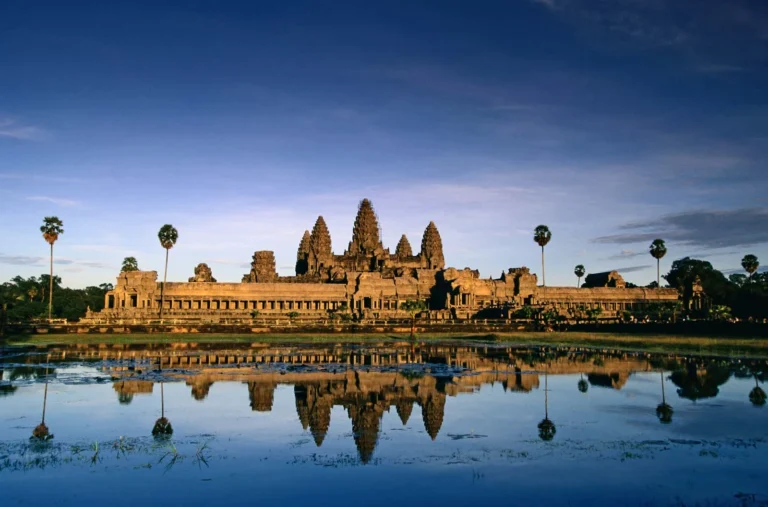
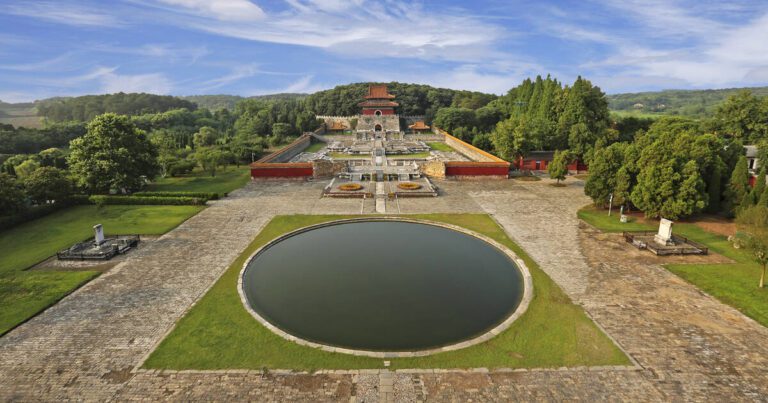
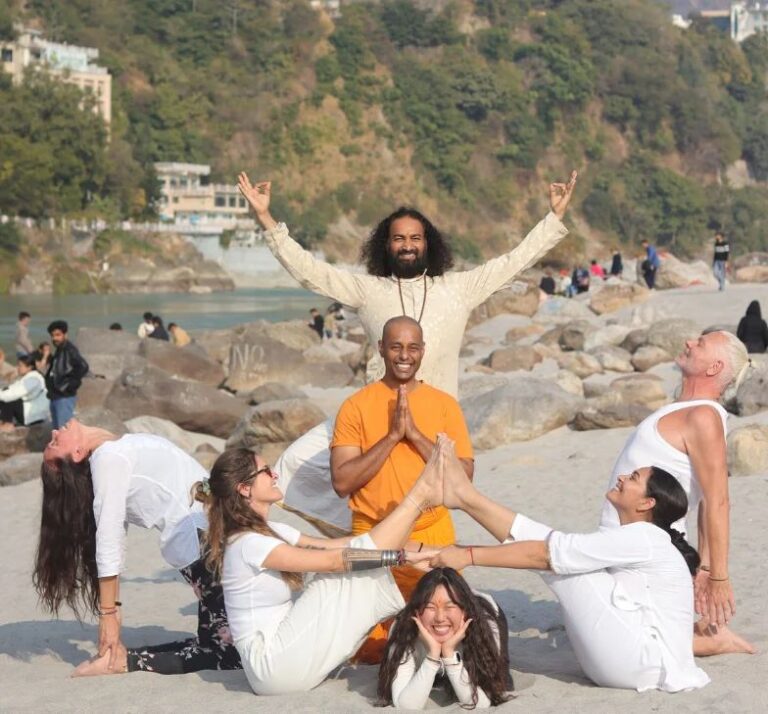

![Best itinerary Cambodia 1/2/3 weeks [ PRO TRAVELER 2025 ]](https://funkyfreshtravels.com/wp-content/uploads/2025/05/3bbb0d50f6bcb212a6d5f7ac1f7c0cfc.jpg)
